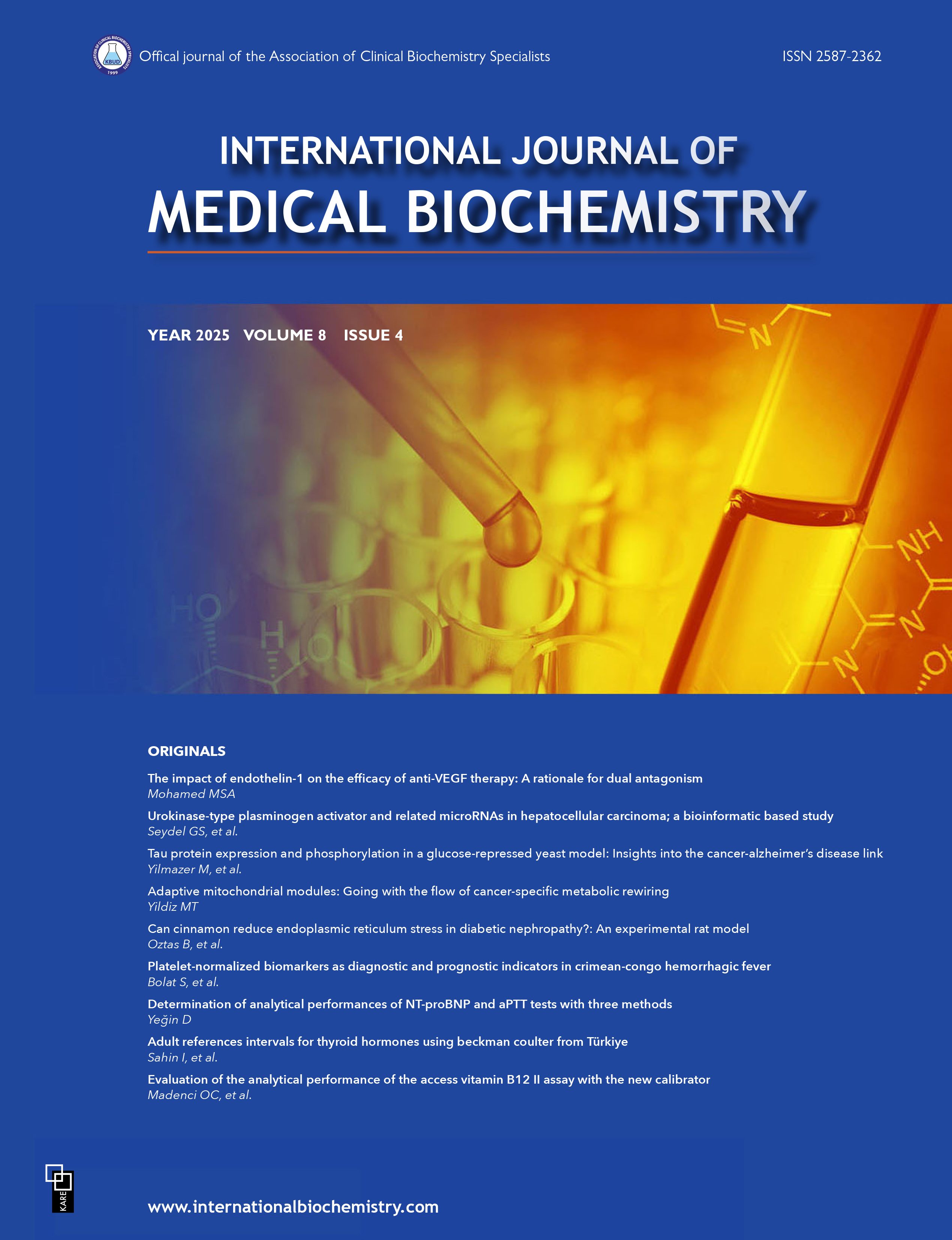The relationship between ischemia-modified albumin/albumin ratio levels and disease severity in COVID-19 patients
Murat Aksit1, Merve Zeytinli Aksit2, Musab Kazar1, Taner Çalışkan3, Suheyla Serin Senger4, Harun Akar5, Gursel Ersan4, Nisel Yilmaz6, Banu Isbilen Basok1, Ayfer Colak11Department of Medical Biochemistry, Izmir Tepecik Training and Research Hospital, Izmir, Turkiye2Department of Medical Biochemistry, Bakircay University Cigli Training and Research Hospital, Izmir, Turkiye
3Department of Anesthesiology and Reanimation Intensive Care, Izmir Tepecik Training and Research Hospital, Izmir, Turkiye
4Department of Infectious Diseases and Clinical Microbiology, Izmir Tepecik Training and Research Hospital, Izmir, Turkiye of Infectious Diseases and Clinical Microbiology, Tepecik Training and Research Hospital, Izmir, Turkey
5Department of Internal Medicine, Izmir Tepecik Training and Research Hospital, Izmir, Turkiye
6Department of Medical Microbiology, Izmir Tepecik Training and Research Hospital, Izmir, Turkiye
INTRODUCTION: In COVID-19 infection, oxidative stress occurs with the abnormal release of proinflammatory cytokines and the disruption of the balance between oxidants and antioxidants. In our study, we aimed to investigate the relationship between ischemia-modified albumin (IMA), a biomarker of oxidative stress, and the severity of the disease in hospitalized COVID-19 patients.
METHODS: One hundred and twenty-four hospitalized patients with a diagnosis of COVID-19 were included in the study. These patients were divided into critical and non-critical groups. Serum IMA levels were measured by the colorimetric albumin cobalt-binding method. The IMA-albumin ratio (IMAR) was calculated by dividing IMA values by albumin values.
RESULTS: The IMA and IMAR values of the critical COVID-19 group were statistically significantly higher than the non-critical group. In the multivariate analysis, the two variables IMAR and glucose were found to have the most important role in the severity of COVID-19 disease. For IMAR, the area under the ROC curve had a value of 0.725 (95% confidence interval 0.6360.803).
DISCUSSION AND CONCLUSION: IMA and IMAR levels of the critical group were found to be higher than the non-critical group in COVID patients. We have observed that IMAR levels are associated with the severity of the disease and that IMAR is an independent prognostic risk factor for the disease.
Keywords: Albumin, COVID-19, IMAR, ischemia-modified albumin, oxidative stress
Manuscript Language: English







